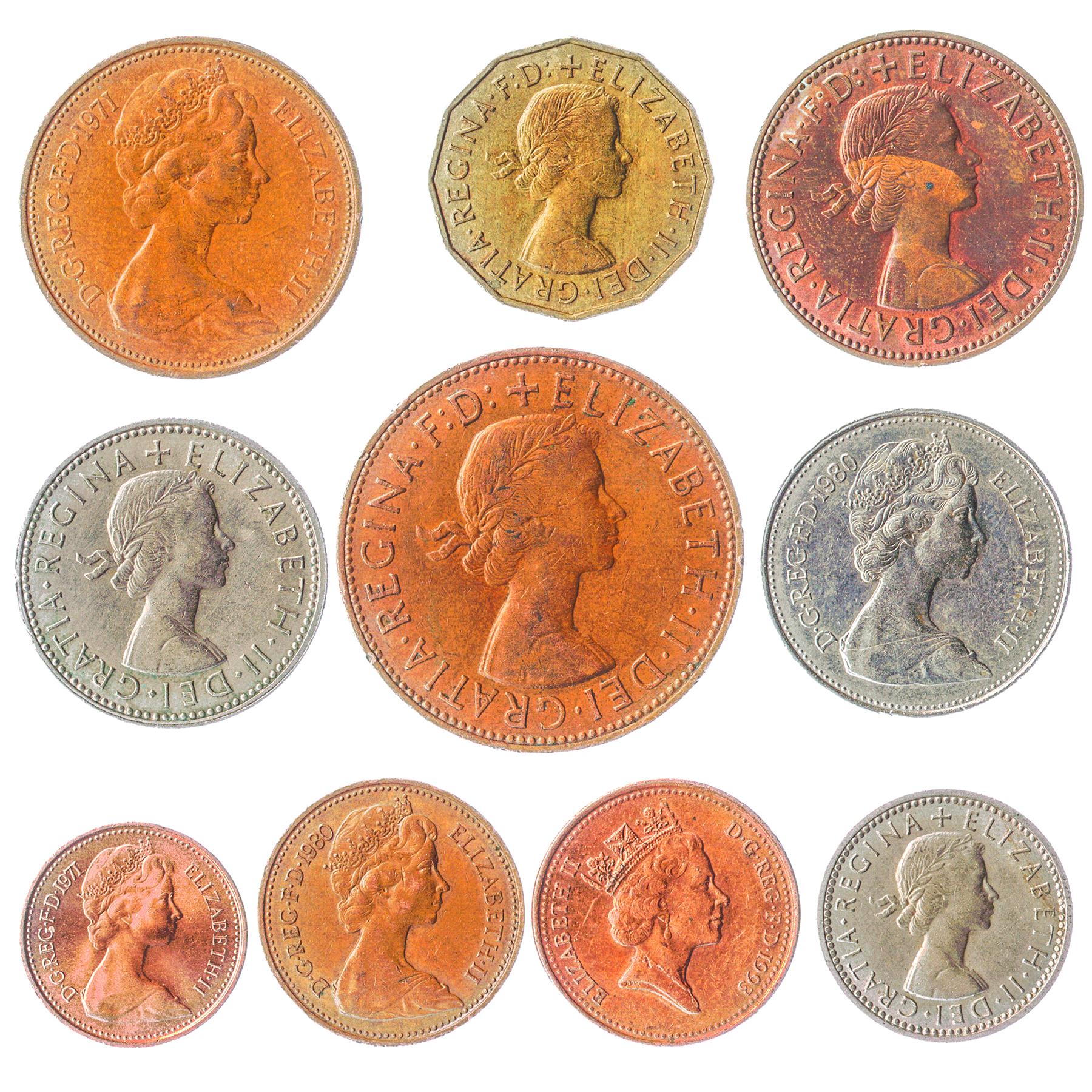10 Mixed coins from United Kingdom (Britain, United Kingdom of Great Britain and Northern Ireland). Different British coins picked randomly from these periods: Pound sterling (1953 - 2020).
The product may contain these denominations: New Pence, Farthing, Shilling, Penny
Monetary unit and its division: 4 Farthing = 1 Penny; 12 Pence = 1 Shilling; 5 Shillings = 1 Crown; 20 Shillings = 1 Pound; 100 Pence = 1 Pound
Currency: Mixed
Coin type: Standard circulated coins
Compositions: Bronze, Brass, Copper-nickel, Nickel brass, Copper plated steel
Type: Collections, Lots
Year: 1953 - 2020
Weight: 50 g.
Shape: Round
Mint: Royal Mint
Mint location: Llantrisant
The product may be slightly different from the photos. Each product may have different combinations of coins, various dates, and denominations, and unique catalog numbers. Please pay attention, these currencies were in general circulation for many years. The coins may have scratches, dirt, or damage from oxidation.
Pictures and symbols may be found on the coins:
ℹ Themes: Boats, Portraits
👸 Queens: Elizabeth II
👑 Kings: George VI
🐾 Animals: Wren
🐦 Birds: Eurasian wren
🏟 Buildings: Britannia figure
🍀 Plants: Olive branch, Turor Rose
🌹 Flowers: Thistle
🚢 Ships and Boats: Golden Hind
Other interesting information: Britannia is the national personification of Britain as a helmeted female warrior holding a trident and shield. Britannia was the name variously applied to the British Isles, Great Britain, and the Roman province of Britain during the Roman Empire. Appearing on Roman coins of the 2nd century AD. To symbolise the Royal Navy's victories, Britannia's spear became the characteristic trident in 1797, and a helmet was added to the coinage in 1825.
Other fact: Golden Hind was a galleon captained by Francis Drake in his circumnavigation of the world between 1577 and 1580. She was originally known as Pelican, but Drake renamed her mid-voyage in 1578, in honour of his patron, Sir Christopher Hatton, whose crest was a golden hind (a female red deer). Queen Elizabeth I partly sponsored Sir Francis Drake as the leader of an expedition intended to pass around South America through the Strait of Magellan and to explore the coast that lay beyond. The queen's support was advantageous; Drake had official approval to benefit himself and the queen, as well as to cause the maximum damage to the Spaniards. This eventually culminated in the Anglo–Spanish War.






















